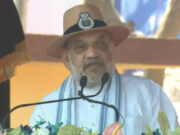
Many fleet operators are still unfamiliar with the operational differences between electric and conventional vehicles. (Photo: Engineer’s Planet)
Electrifying fleet and commercial vehicles emerges as a promising strategy, given that the transport sector accounts for 40% of global CO2 emissions.
The Indian government is actively working to lower the nation’s greenhouse gas emissions and achieve its net zero emissions goal.
In this regard, electrification of fleet and commercial vehicles seems like a promising solution to lower global emissions as 40 percent of global CO2 emissions are caused by the transport sector.
This scope has motivated the government to roll out pro-electronic vehicle measures through incentives and tax breaks to support fleet electric’s transition to zero-emission vehicles. The transition is also economically beneficial for fleet operators as the lower electricity cost can help them cut more expenses against conventional fuel use.
However, this switch is not devoid of challenges, and currently, the availability of efficient charging infrastructures for fleets is at the top of the list for commercial fleet owners.
In a recent interaction with Akihiro Ueda, CEO of Terra Charge, he expressed that despite attempts to boost charging infrastructure across India, these challenges continue to hinder progress.
Knowledge gap
Many fleet operators are still unaware of the difference between how EVs and conventional vehicles are powered. Their unfamiliarity with the new-age technology has been an obstacle to electrifying their fleet. The absence of widespread information among owners and investors about zero-emissions, growth prospects of charging infrastructure business, operating requirements, and how to connect fleets to the grid for charging, adds to the problem of deploying charging infrastructure for fleets.
However, increased discussions around cost-sharing formulas and roles for electric charging infrastructure development can boost interest in EVs and charging requirements, pushing their demand.
Lack of standardization
The lack of standardization among EV chargers and charging stations is a barrier to charging infrastructure deployment. Typically, the absence of charging standards makes owners reluctant to increase their fleet size, especially the electric models due to range-issue-related complexities.
However, to increase options in slow and fast chargers, Combined Charging systems, Bharat DC-001, CHAdeMO, and AC-001 connectors can be installed in a single charging hub.
“This will allow drivers to choose as per their needs and time. Furthermore, standardization for charging hardware, software, and operating protocols may lower compliance issues and improve adoption,” as said by Akihiro Ueda, CEO of Terra Charge.
Limited grid capacity
Unlike light passenger vehicles, commercial vehicles vehicles have large battery sizes that require high-power charging infrastructure. This spikes power demand, pressurizing local electrical supply networks, especially during peak load hours. This challenge can be addressed by upgrading the local electricity supply network to double the grid capacity before installing new charging hubs for heavy commercial vehicles.
Hunt for the ideal location
Identifying a suitable location for an in-house charging station is a challenge because commercial businesses need to choose a prime location that is easy to access and can keep the charging line moving quickly. Features like ample parking space, quick access, and a waiting area can help fleet riders power their vehicles with minimal hassles. Also, collaborating with Charging Point Operators offering comprehensive infrastructure development support may be helpful in this regard.
Maintaining technical safety
The lack of knowledge about specialized safety measures, especially recurrence crisscross, voltage fluctuation, overcurrent, etc, can deter owners from exploring charging hub installation. With technical assistance from CPO professionals, fleet owners can navigate issues and ensure proper operation and maintenance of charging hubs.
Through these conscious efforts, the prevalent challenges of EV charging infrastructure for fleets can be addressed. With the government taking steps to make India a nation of EVs, more investments and infrastructure support to boost charging infrastructure deployment for electric fleets can be anticipated.




































